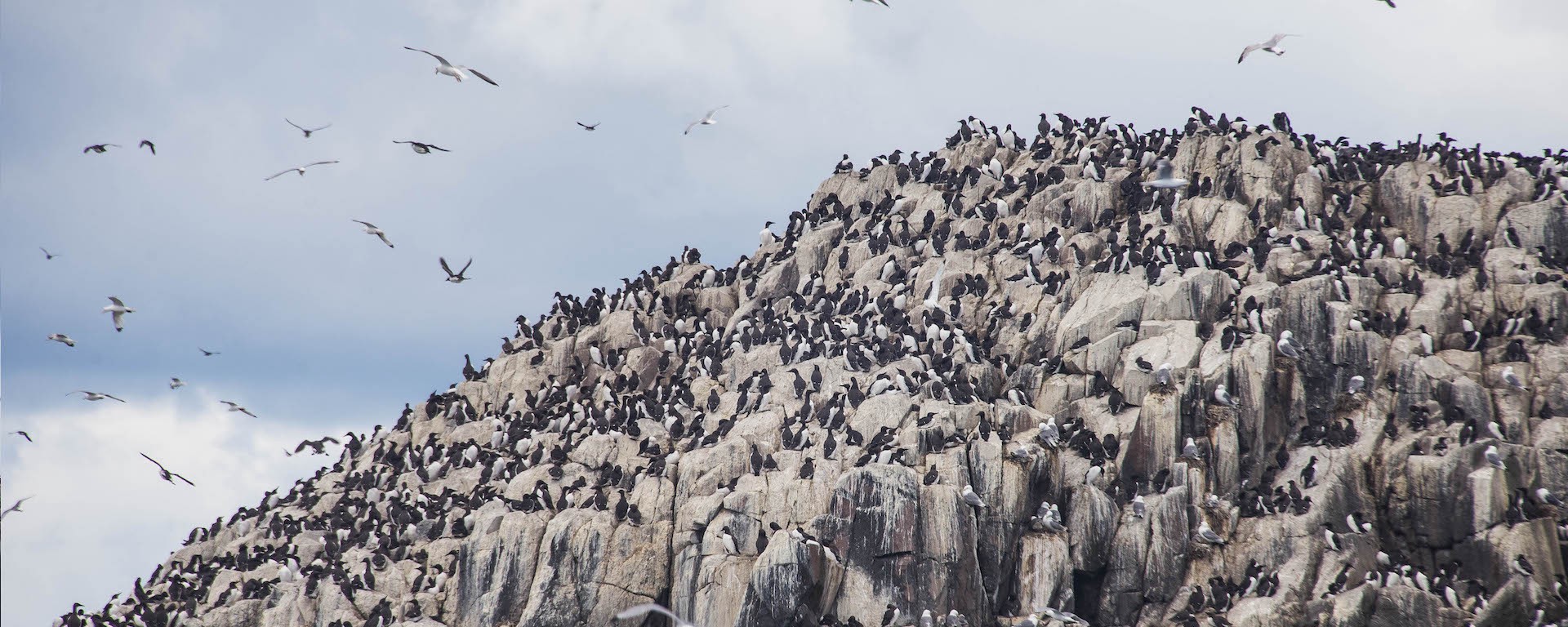
We’re between episodes on “The Thin Layer,” our podcast about soil. Last week’s episode was about the Dust Bowl, and next week’s is about the medicines and diseases that microbes in soil are responsible for. But the nature of making a show like this is that sometimes you can’t follow up on every promising lead–interesting threads wind up as dead ends, at least for the purposes of telling your main story.
One of those “Thin Layer” dead ends is guano–seabird and bat poop. The story of guano is really a story about what humans will do in the pursuit of keeping things just the way they are, regardless of the consequences–and it doesn’t fill me with a huge amount of optimism about how the world will adapt to climate change in the 21st century.
A big recurring theme in the show is that most of us have a tendency to think of soil as an inert substance that we can convert into food by growing things in it. On the level of chemistry, that’s not wrong, but it misses that soil’s fertility is dependent on a cycle of nutrients going back into the soil as well–and that ignoring that cycle can lead to destruction. For most of human history, that recycling was achieved by either a) leaving land to recover for a few years before growing on it again, or b) adding manure.
Guano is essentially nature’s most powerful version of the latter, a concentrated dose of nitrates, phosphates, and potassium. The first European to realize this, the Prussian naturalist Alexander von Humboldt, did so after travelling through Peru from 1799 to 1804. The Inca had guarded their mountains of guano for centuries–until the Europeans arrived. The 19th century saw Peru, including its islands, gutted for its guano by imperialist powers. The Industrial Revolution’s European population boom was built on bird poop.
As a strategic resource, guano’s scarcity had geopolitical consequences. Imperial navies raced each other to claim islands in the Pacific that could be strip-mined. The major powers guarded their access to guano carefully, and denied it to rivals–U.S. President Millard Fillmore spent a chunk of his 1850 State of the Union address promising American farmers that he’d break the British monopoly on Peruvian guano. In 1864, Spain seized the three small Chincha Islands off the coast of Peru, which were essentially floating piles of bird poop in the Pacific. Spain lost that war against an alliance of its former South American colonies, but by 1879, Peru and Bolivia were fighting Chile over guano as well.
It takes a long time for guano deposits to build up–birds defecate at a much slower rate than humans can dig, and most major guano deposits were exhausted towards the end of the 19th century. [Editor’s note: One reader, Tim Smith, got in touch after this piece was published in our newsletter to point out that mining guano has had environmental repercussions to this day.] People began to search for minerals like caliche, a type of sand containing sodium nitrate, that could work as an effective replacement. (That 1879 war was as much over caliche as it was over guano.)
In the 1910s, German chemists were looking for better explosives for the German army–and discovered how to make artificial nitrogen fertilizers in the process. That’s not the only link between fertilizer and the First World War: some of the first British troops and ships to be deployed weren’t headed to Flanders or Ypres, but to Basra and the coast of Chile. Oil and caliche, fuel and food, were equally essential.
Since the discovery those German chemists made, we’ve been able to make artificial fertilizers in labs and factories–countries no longer need to fight each other over bird droppings. Instead, we fight each other for the oil that generates the electricity that’s used to make the fertilizers. The last couple of centuries have been a pretty uninterrupted history of selfish resource exploitation on behalf of individual countries, empires, or entire continents. For me, this bridges the gap between where we are now and the future, as seen in dystopian post-apocalyptic movies like Mad Max (oil or water, depending on the entry in the series), or even Waterworld, where land itself is the resource being fought over.
Another thing we briefly cover in episode two of “The Thin Layer” is this study from Ronald Amundson at UC Berkeley, about how 80 percent of the world’s known phosphorus reserves are in Morocco. He cautiously suggests that this could lead to the emergence of “phosphorus cartels,” a clear call-back to the guano conflicts of the 19th century. I say cautiously, because he wanted to stress that it’s just a possibility. It reminds me, though, of the eco-sci-fi films of the 1970s, like Soylent Green or Silent Running, that centered on our lack of respect for the environment, or a failure to control the population. They reflected a world where the expert consensus was that we were facing a “population bomb,” a world of Silent Spring. Blockbuster environmental reporting leading to blockbuster movie-making.
I think we’re overdue a new wave of consciously environmental storytelling, something that actually grapples with the social tensions that will come from having to finally–after more than two centuries–having to make a choice between sustainability or exploiting some other new energy source.
You could make an argument that it’s already starting to rear its head, as Nick Hilton did recently in the Guardian, pointing to movies like Okja and Ready Player One which use overpopulation in a near-future world as a plot device. And, of course, there’s Thanos in Infinity War, who sees killing half the universe as an act of mercy. (Shoutout to half the members of r/thanosdidnothingwrong this week!)
Hilton argues that these movies are, just like in the 1970s, responses to books published recently with authors wringing their hands–this time, about the world’s population soon reaching 10 billion. But they’re also interesting for how they respond to that problem. Okja is about genetically engineering bigger pigs, and focuses on the animal rights implications; Ready Player One has characters escape overcrowded slums by entering virtual reality; Downsizing is about a shrink ray that makes people take up less space, and therefore fewer resources.
All of them implicitly assume that we’re going to repeat history, and–to quote Matt Damon’s character in The Martian–”science the shit” out of the problem. Why collectively work through the moral and ethical consequences of climate change or water scarcity, when you can just mine an asteroid or move to Mars? There always seems to be an escape pod for those who can afford it. Ad astra, Elon.

How We Get To Next was a magazine that explored the future of science, technology, and culture from 2014 to 2019. This article is part of our Histories of”¦ section, which looks at stories of innovation from the past. Click the logo to read more.

